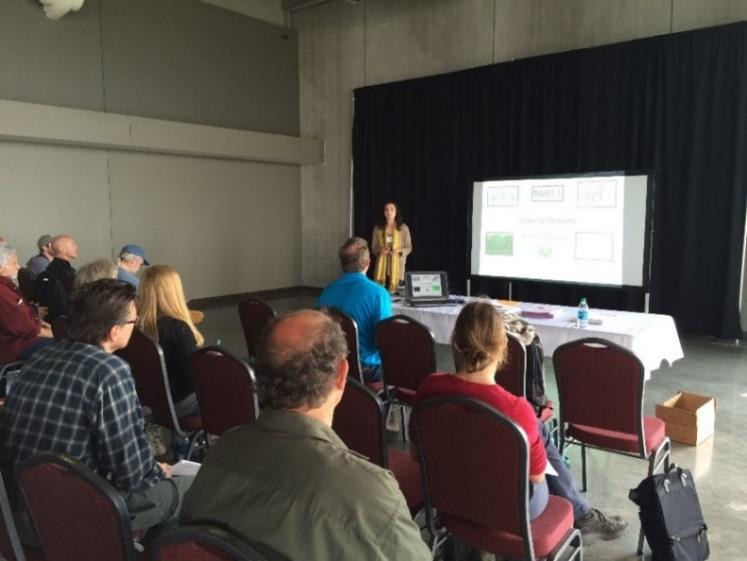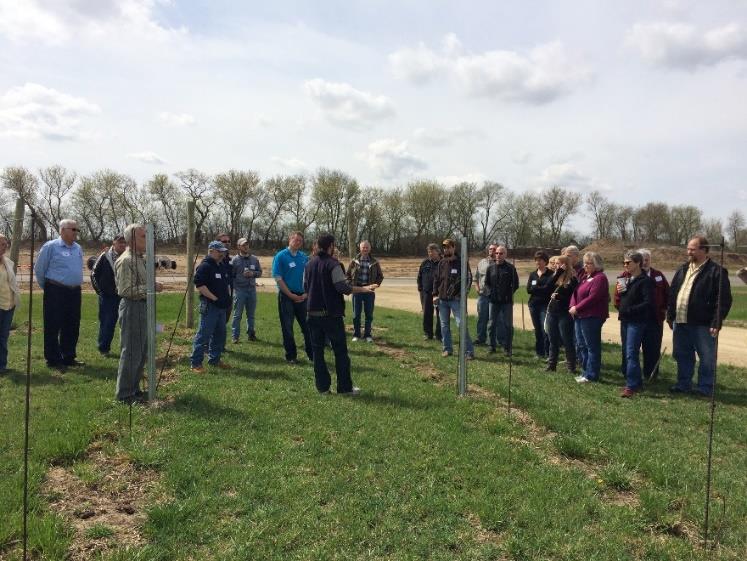Cambridge Beginning Vineyard School
Last Thursday April 21st was the Cambridge Beginning Vineyard School, sponsored by the Wisconsin Grape Growers Association and located at Cambridge Winery. The talks, from six invited speakers as well as a grower panel, covered a lot of ground, exploring pretty much everything you need to know in order to start a vineyard, all the way from site and variety selection through vine training and pruning, and finally disease and insect management! Coming in to the program, I knew very little about vineyard management, and here are a few things I learned on Thursday.

There is a difference between “frost damage”, which happens in the spring or fall when freezing temperatures damage the green plant tissue after it has started budding out, compared to “winter damage”, which is when extremely cold temperatures, especially early in the winter, cause damage to dormant buds or xylem/phloem tissues. In some regions, vineyards will be more prone to frost damage, especially if vines have an early bud break. The northwest parts of Wisconsin have a continental climate, characterized by rapidly fluctuating air temperature on a daily basis, while areas close to Lake Michigan will have more moderated changes in temperature due to the buffer effect of the lake.
Itasca is a new white wine grape cultivar which will be released out of the University of Minnesota breeding program in 2017. Some advantages of Itasca are that it is highly cold tolerant and shows resistance to downy and powdery mildew. We recently posted a little information about the Itasca grape on the Wisconsin Fruit website – you can read more about Itasca grapes here.
It is recommended to not trim or prune dormant grape vine at planting. In fact, the objective during the first year of planting is to establish a strong root system and let the vines grow as much foliage as possible to provide carbohydrates to the new roots. Grape vine’s first pruning should take place the following spring when it’s starting its second year. There was a lot of interesting information regarding grape trellising and pruning by presenter Madeline Wimmer. She will be providing an infographic about her work in the next edition of our newsletter, so I will let the expert tell her story then!

The most important times for spraying fungicides are just before, during and after bloom. However, no matter what your fungicide program, the most important disease management strategies include sanitation, good airflow and soil drainage, and
where practical, using varieties that are relatively resistant to disease.
The insect pests you are most likely to see right now are grape flea beetle and climbing cutworms. Flea beetle adults, which emerge in April-May, feed directly on the grape buds, potentially damaging both primary and secondary buds. By feeding on both those buds, flea beetles can, despite their tiny size, reduce yield by up to 100%. Cutworms similarly feed on swelling buds in the spring. The best way to determine if damage is being done by flea beetles or by cutworms is to see when the damage happens – flea beetles are active and feed during the day, while cutworms feed at night.
This article was posted in Grapes, WFN, Vol. 1-4 and tagged Cambridge, Grapes, Janet van Zoeren, vineyard school.
